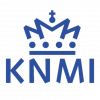An Affordable Micro-Satellite Constellation of Infrared Spectral Sounders to Meet Future Atmospheric Vertical of Temperature, Water Vapor, and Wind Fields with Rapid Refresh
Next generation weather forecasting will depend on frequent vertical profiling observations of the troposphere and stratosphere, including dense vertical profiling of temperature, water vapor, and wind fields. Our approach to meeting NOAA’s GEO/XO and post-JPSS LEO IR sounding requirements with a LEO micro-satellite constellation builds on BAE Systems’ MISTiC Winds mid-wave IR sounding and vertically resolved motion-vector wind observing method. It extends the MISTiC payload concept to include a suite of miniature IR instruments hosted by micro-satellite(s) whose designs are driven by the IR instrument performance requirements developed by NOAA and NASA during the GOES-R HES studies, as well as requirements identified in the recent NOAA LEO and GEO BAAs. One instrument in the suite, MISTiC, provides temperature vertical profile information from spectral radiances near 2385 cm -1, and water vapor vertical profile and hyperspectral moisture motion vector information in the 1750-2000 cm -1 band. Fine instrument spatial resolution enables both fine feature tracking, as well as tropospheric sounding at a nadir resolution finer than 3 km in the troposphere. The other instrument in the suite, LISSTiC, provides LWIR window-band and temperature vertical profile information from spectral radiances in the 680-1040 cm-1 band. Together, these provide the capabilities to sound the troposphere and stratosphere at unprecedented refresh rates. As separate miniature instruments, they support a distributed-architecture implementation of a next-generation observing system employing ESPA-class (50 kg) micro-satellites that are compatible with a broad range of new and emerging low-cost commercial micro-satellite spacecraft hosting and launch service options. This approach reduces the lifecycle cost of the observing system relative to a geostationary implementation, improves system resiliency, and provides for the frequent infusion of new technology and observing method refinements.






